#dromaeosauroides
Explore tagged Tumblr posts
Text
I’m Mahakala! Which raptor are you? Screenshot to find out!
Stickers here!
#video#art#my art#paleoart#paleontology#science#illustration#dinosaur#dromaeosaur#velociraptor#microraptor#achillobator#deinonychus#austroraptor#utahraptor#dakotaraptor#halzskaraptor#mahakala#dromaeosauroides#paleo party
89 notes
·
View notes
Note
Okay, took a breather and drank some water! Has anyone told you what a wonderful listener you are Shelly? *quietly summons and offers Looey some water cause he's been running a lot once he's far enough away from Shelly* *2003 lets go: Bungostegos, a parareptile one of the largest herbivores of their time, Amazonsaurus, Antetonitrus, Aviatyrannis, Bainoceratops, Brohisaurus, Colepiocephale, Dromaeosauroides, Equijubus, Ferganasaurus, Fukuisaurus, Gobititan, Hanssuesia, Heyuannia, Hongshanosaurus, Isisaurus, Lamaceratops, Lusotitan, Magnirostris, Mendozasaurus, Olorotitan, Platyceratops, Rajasaurus, Rinconsaurus, Serendipaxeratops, Shenzhousaurus, Shuangimiaosaurus, Silesaurus Sinorthimimus, Yixianosaurus, Zalmoxes, Zupaysaurus*
Oh boy, thanks.. keep them coming.. I don't want Looey to pass out or anything...
also...that's a lot of dinosaurs
#dandys world#dw#boxten#dw boxten#boxten dw#dandy's world boxten#roleplay blog#dandy's world rp#rp blog#ask blog#ichor operation arc
2 notes
·
View notes
Text
Triassic collision: The high lizards.




During the early jurassic, the coelurosaurs would also diversify but with the rauisuchians around. They would be restricted to smaller forms.
However, the rauisichians would eventually go extinct by the end of the middle jurassic. Finally giving the dinosaurs a chance to once again reign over the earth.
While tyrannosauroids and dromaeosauroids would also evolve during this period, the late jurassic would instead be ruled by a group known as the acrosauroids.
The acrosauroids, also known as the high lizards. Were the first theropods to reach sizes that we would consider big. They would quickly evolve and fill different niches.
The smallest and most basal of the acrosauroids would be the monoceratosaurus (One horned lizard), this is especially obvious by its smaller size and thinner build. Only weighing 1 ton despite being almost the same height and length as the ceratosaurus from our universe. These animals usually prey on smaller prey like deer sized mammaliformes or other coelurosaurs, and are especially known to target the eggs most of the time. One interesting thing about this animal is its single horn on its nose, which is considered to be used for attracting mates.
Then we have acrosaurus (High lizard), which the entire group is named after. Being the most popular and also the first acrosauroid, this animal is iconic for its large sail on its tail. The exact purpose of the tail is still unknown, but its mostly considered to be used for attract mates or for heat regulation and cooling the animal. Acrosaurus was by far the most successful predator of the late jurassic, hunting large herbivores and chasing out other theropods of the area.
However, the largest acrosauroid by far would be gigsaurus (Gigantic lizard). The most interesting part of this dinosaur is its hump or sail on its neck, the purpose of this hump has debated because of its odd placement. Not only that, the hump would have also restricted the animals neck movement. Because of this, it is believed that gigasaurus would have hunted smaller prey or scavenged food. This is also not helped by the gigasaurus's fragmentary nature, with the first fossil ever discovered being mistaken to be an acrosaurus. Not only, the gigsaurus is also believed to be closely related to acrosaurus but this has also been debated. Unless more material is found, the gigsaurus and its hump still stays a mystery.
The final acrosauroid that we are gonna talk about is the carcharosaurus (Shark lizard), what makes this acrosauroid interesting is its aquatic adaptations. As younglings, the carcharosaurus are born with 2 fingers with their third finger having evolved into a fin. But as they get older, their fingers eventually fingers will smaller before completely disapearing. It's believed to have hunted near the shores, lakes, and rivers. Their diet consisted of fish, crocodiles, thalattosuchians, small mammaliformes and coelurosaurs.
3 notes
·
View notes
Text
Wikipedia article of the day for September 20, 2018
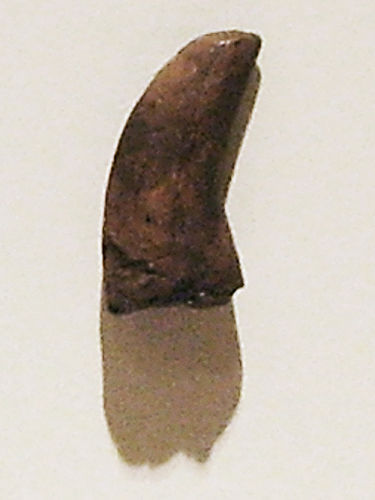
The Wikipedia article of the day for September 20, 2018 is Dromaeosauroides. Dromaeosauroides was a theropod dinosaur that lived around 140 million years ago during the Early Cretaceous, making it one of the oldest known dromaeosaurs. In 2000 and 2008, two fossilised teeth from this genus (cast pictured) were discovered in the Jydegaard Formation in the Robbedale valley, on the island of Bornholm, Denmark, in the Baltic Sea. It is the first dinosaur reported from Denmark. After these discoveries, remains and tracks of more dinosaurs were found in several formations on Bornholm. Coprolites containing fish remains found in the Jydegaard Formation may belong to Dromaeosauroides. The teeth are curved and finely serrated. Based on a comparison with other dromaeosaur teeth, the genus is estimated to have been 2 to 3 metres (7 to 10 ft) in length, with a weight of about 40 kilograms (88 lb), a hide covered with feathers, and a large sickle claw on both feet. It lived in a coastal lagoon environment with sauropods, as evidenced by a possible titanosaur tooth.
0 notes
Text
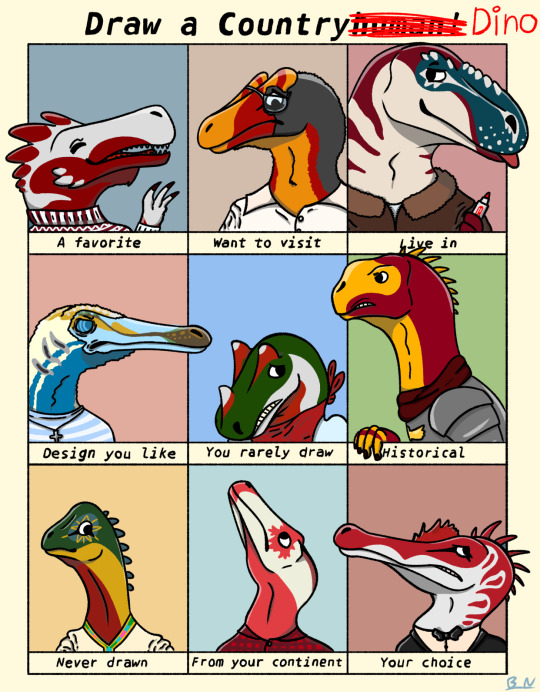
Finally finished this monster!
From left to right, up to down, we got
Denmark- Dromaeosauroides
Germany- Liliensternus
America- Capitalsaurus
San Marino- Scipionyx
Italy- Saltriovenator
Rome- Cetiosaurus
Ethiopia- Unknown Brachiosaurid
Canada- Albertosaurus
England- Baryonyx
#art#dinosaurs#digital art#countrydinos#countryhumans#dinosaur#dino#scalie#challenge#ibispaint art#ibispaintx#ibispaint#countrydinos denmark#countrydinos germany#countrydinos america#countrydinos San Marino#countrydinos Italy#countrydinos Rome#countrydinos ethiopia#countrydinos canada#countrydinos england#dromaeosauroides#Liliensternus#capitalsaurus#scipionyx#saltriovenator#cetiosaurus#brachiosaurus#albertosaurus#baryonyx
13 notes
·
View notes
Text
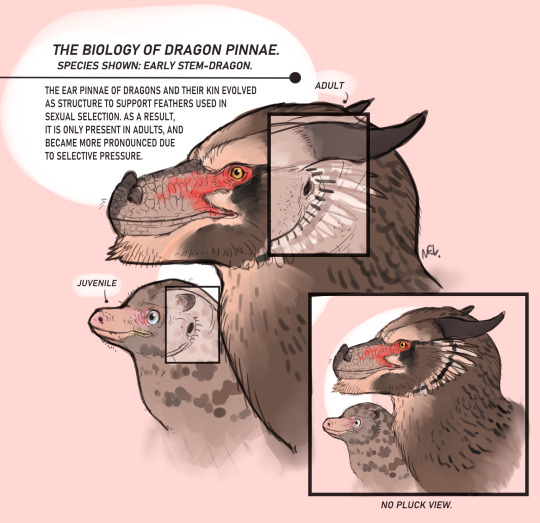
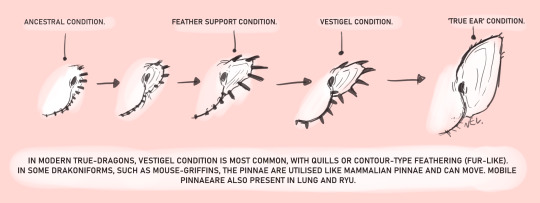
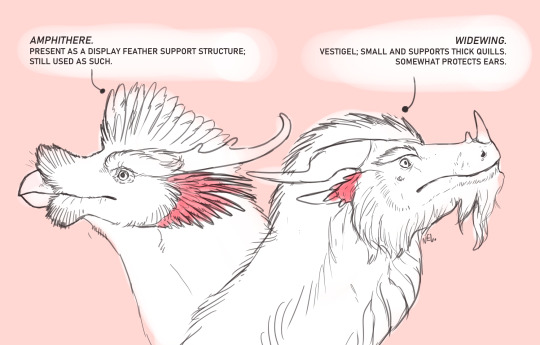
Smaugust Day 3 - Biology, Pinnae
the evolution of Dragon ear pinnae (the cartilage structures)! being dromaeosauroids, NVMR dragons do not have ear pinnae analogous to mammalian ears. instead, it came as a result of some display feathers lining behund the ear and on the cheek. over time, natural selection worked in favour for larger, more elaborate display feathers, and a cartilage structure supprting the feathers to allow larger ones began to evolve. despite being a prominent feature in stem-dragons, display feathering in the ears is uncommon amongst true dragons, with many having sharp sharp quills on the ear like structures or fur like fluff.
however, some drakoniforms did retain display feathering on the cheeks and ears, such as griffins and siren. in some dragons and drakoniforms, these cartilage structures even ended up secondarily doing the same thing as mammalian pinnae. this is true for Lung, Ryu, and Mouse Griffin as examples. although the cartilage is largely immobile in most dragonkin, it is somewhat mobile in thesr three species, though not as much as mammalian ears.
being ancestrally display structures, only adults of the species' have the cartilage strcutures, with exception of the Mouse Griffin (although they are still reduced in juveniles).
113 notes
·
View notes
Text
Hi, this is the Holocene Dinosaur Project.
Imagine a world where 66 million years ago the Chicxulub asteroid escaped the Earth and didn't wipe out the great minds of the species, including the non-bird dinosaurs.
Imagine dinosaurs continuing their evolution.
New species and families appear, while others disappear.
What is more likely to affect their evolution are changes in climate during the Tertiary. The initially tropical hot and humid climate became cooler and drier. And the rainforests of the Palaeocene became thinner and thinner, giving way to savannahs.
On the other hand, since no asteroid impacts occurred, dinosaur evolution could have continued. Palaeontologists believe that a kind of faunal shift began in the Late Cretaceous, with large herbivores slowly disappearing and giving way to other groups.
This shift was completed by the middle of the Palaeocene. This is when the last large ceratopsids and hadrosauroids disappeared. They were replaced by the large-clawed therizinosauroids and the diverse Oviraptosaurosids.
They were hunted by the still apex predators Tyrannosauroids and Dromaeosauroids.
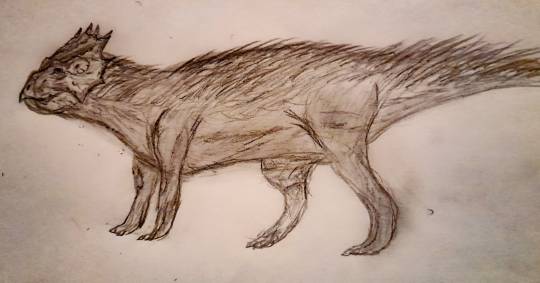
As the Palaeocene forests thinned and the understorey became richer with the influx of sunlight, the small, hitherto cavernous Leptoceratopsids and the marsh-dwelling Thescelosauroids became more abundant. Their ability to chew and the development of a multipart digestive system accelerated their spread.
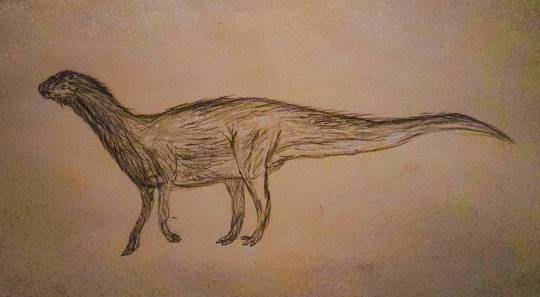
During the Eocene, the European continent, which had been an island continent, collided with Asia, and Ludoceratopsidea and other groups migrating from North America entered the new continent and displaced the extant Iguanodontidea and Titanosauroidea dinosaurs. But this mozzabat created the perfect situation for another character in the story to take the stage. Although the descendants of Balaur may look like Dromaeosauroids on the outside, this is merely the result of convergent evolution. In fact, the birds' relatives and ancestors may have arrived on the islands in flight and then become flightless due to lack of competition. Over millions of years, their descendants migrate further west and these terrormorphic predators become the food competitors of the Tyrannosauroids. They will then displace their last representatives.

This is what the world looks like. The savannahs are roamed by four-legged, parrot-beaked herbivores, resembling feathered gazelles, and stalked by bird-like predators.
I'm going to show you the corners of this alternative land in this article, with pictures
#speculative evolution#speculative zoology#speculative biology#dinosaur#dinosaurs#art#alternative history
5 notes
·
View notes
Note
hey! I'm one of those artists who check tags LOL, just wanted to let you know I'm technically doing that! it's kind of a worldbuilding project rn but the Dragons are dromaeosauroid derived. :o
HELL YEAH HELL YEAH HELL YEAH
1 note
·
View note
Photo

The Wikipedia article of the day for September 20, 2018 is Dromaeosauroides. Dromaeosauroides was a theropod dinosaur that lived around 140 million years ago during the Early Cretaceous, making it one of the oldest known dromaeosaurs. In 2000 and 2008, two fossilised teeth from this genus (cast pictured) were discovered in the Jydegaard Formation in the Robbedale valley, on the island of Bornholm, Denmark, in the Baltic Sea. It is the first dinosaur reported from Denmark. After these discoveries, remains and tracks of more dinosaurs were found in several formations on Bornholm. Coprolites containing fish remains found in the Jydegaard Formation may belong to Dromaeosauroides. The teeth are curved and finely serrated. Based on a comparison with other dromaeosaur teeth, the genus is estimated to have been 2 to 3 metres (7 to 10 ft) in length, with a weight of about 40 kilograms (88 lb), a hide covered with feathers, and a large sickle claw on both feet. It lived in a coastal lagoon environment with sauropods, as evidenced by a possible titanosaur tooth.
0 notes
Text
Wikipedia article of the day for September 20, 2018 -- Dromaeosauroides
The Wikipedia article of the day for September 20, 2018 is Dromaeosauroides. Dromaeosauroides was a theropod dinosaur that lived around 140 million years ago during the Early Cretaceous, making it one of the oldest known dromaeosaurs. In 2000 and 2008, two fossilised teeth from this genus (cast pictured) were discovered in the Jydegaard Formation in the Robbedale valley, on the island of Bornholm, Denmark, in the Baltic Sea. It is the first dinosaur reported from Denmark. After these discoveries, remains and tracks of more dinosaurs were found in several formations on Bornholm. Coprolites containing fish remains found in the Jydegaard Formation may belong to Dromaeosauroides. The teeth are curved and finely serrated. Based on a comparison with other dromaeosaur teeth, the genus is estimated to have been 2 to 3 metres (7 to 10 ft) in length, with a weight of about 40 kilograms (88 lb), a hide covered with feathers, and a large sickle claw on both feet. It lived in a coastal lagoon environment with sauropods, as evidenced by a possible titanosaur tooth.
0 notes
Text
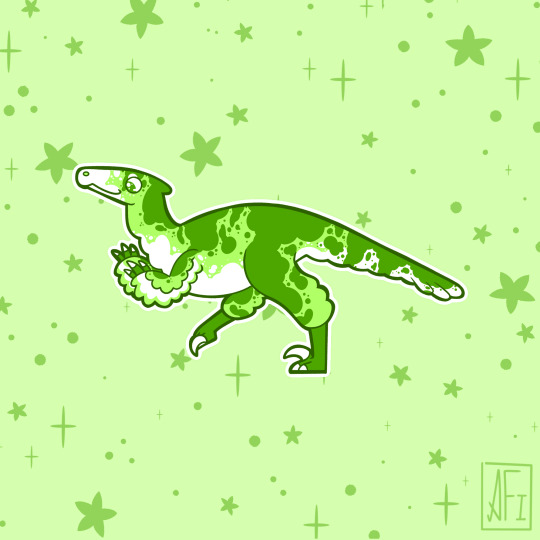
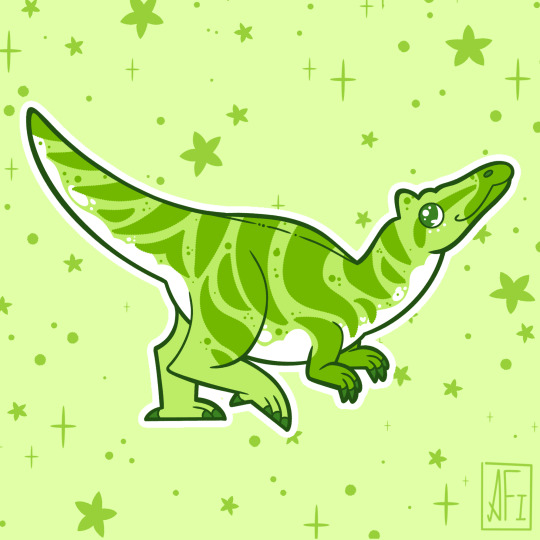
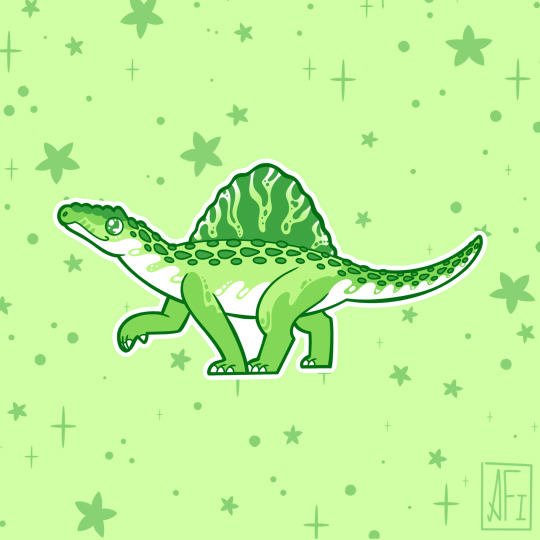
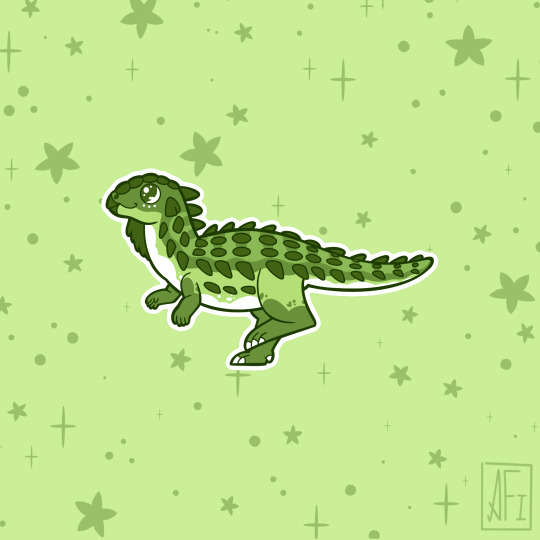
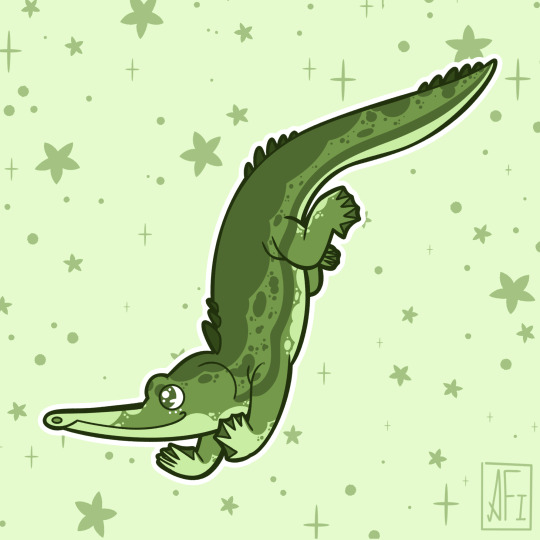
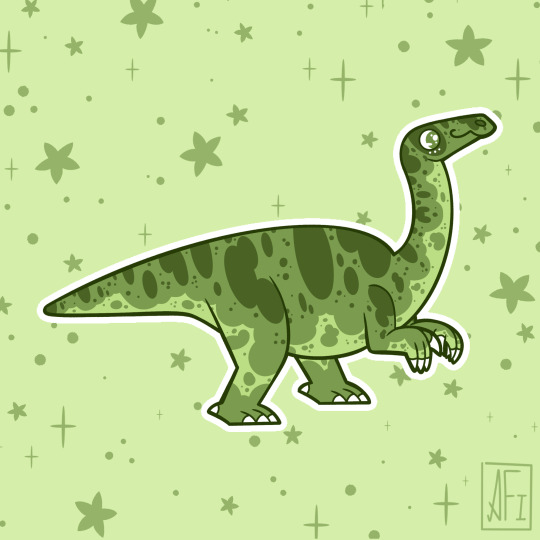
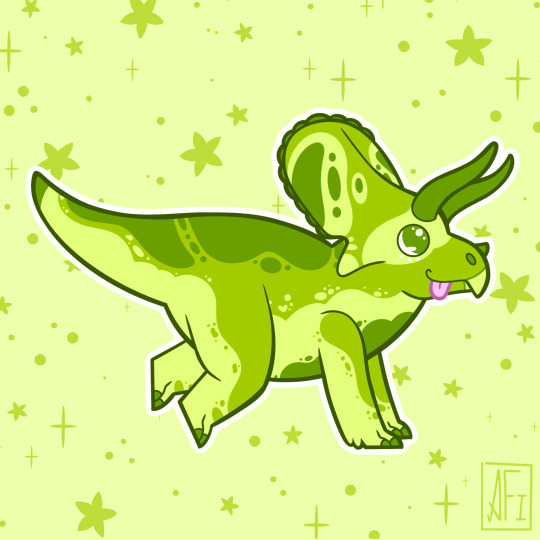
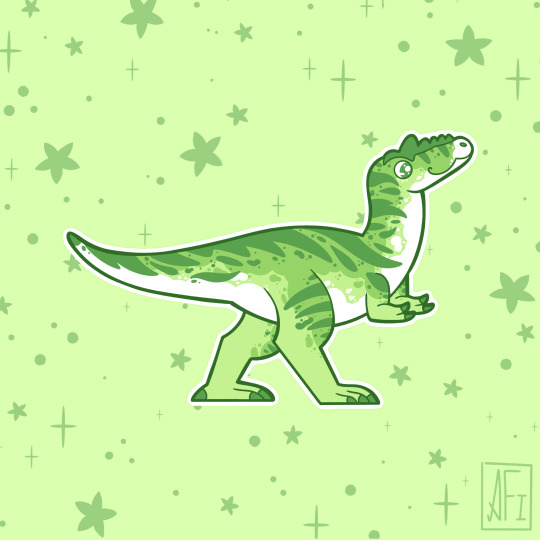
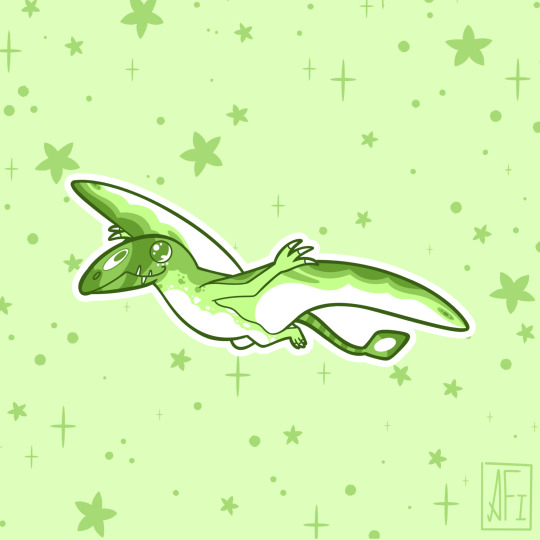
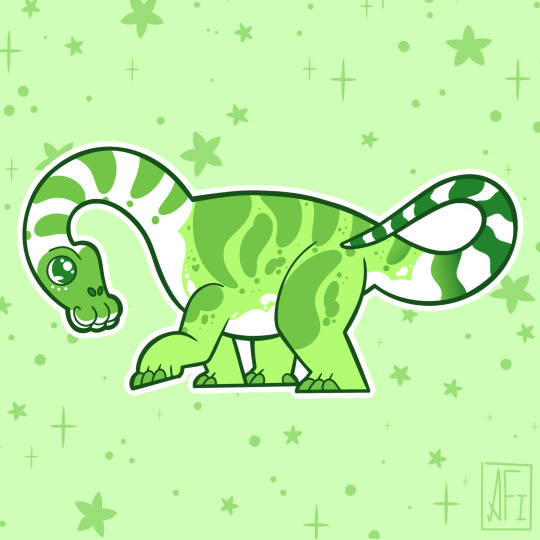
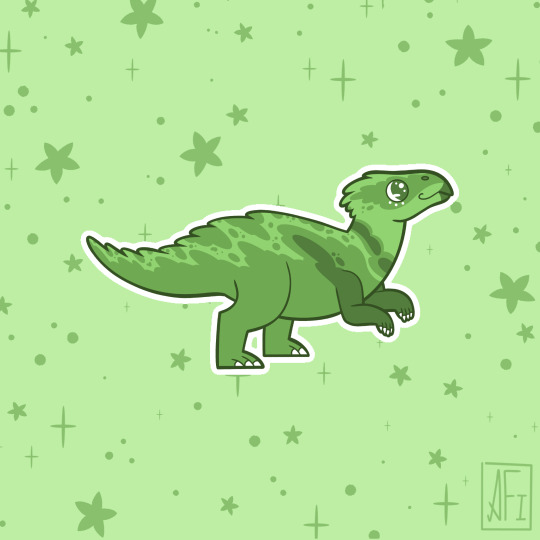
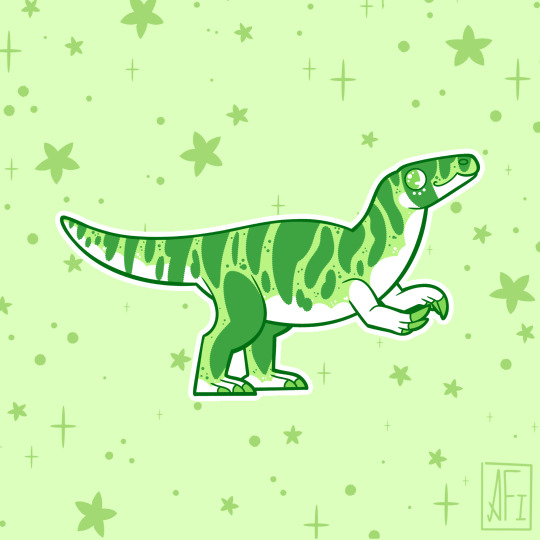
My Mesozoic is Lime Green!
Dromaeosauroides - Ceratosuchops / Baryonyx - Arizonasaurus
Jakapil - Champsosaurus - Plateosaurus
Torosaurus - Alioramus - Dimorphodon
Inawentu - Zalmoxes - Fukuiraptor
Stickers || Phone Wallpapers Masterlist
#art#my art#paleoart#paleontology#science#illustration#dinosaur#Inawentu#Zalmoxes#Fukuiraptor#Dromaeosauroides#Ceratosuchops#Baryonyx#Arizonasaurus#Jakapil#Champsosaurus#Plateosaurus#Torosaurus#Alioramus#Dimorphodon
53 notes
·
View notes
Link
Dromaeosauroides was a theropod dinosaur that lived around 140 million years ago during the Early Cretaceous, making it one of the oldest known dromaeosaurs. In 2000 and 2008, two fossilised teeth from this genus (cast pictured) were discovered in the Jydegaard Formation in the Robbedale valley, on the island of Bornholm, Denmark, in the Baltic Sea. It is the first dinosaur reported from Denmark. After these discoveries, remains and tracks of more dinosaurs were found in several formations on Bornholm. Coprolites containing fish remains found in the Jydegaard Formation may belong to Dromaeosauroides. The teeth are curved and finely serrated. Based on a comparison with other dromaeosaur teeth, the genus is estimated to have been 2 to 3 metres (7 to 10 ft) in length, with a weight of about 40 kilograms (88 lb), a hide covered with feathers, and a large sickle claw on both feet. It lived in a coastal lagoon environment with sauropods, as evidenced by a possible titanosaur tooth.
0 notes
Text
Wikipedia article of the day for September 20, 2018
The Wikipedia article of the day for September 20, 2018 is Dromaeosauroides. Dromaeosauroides was a theropod dinosaur that lived around 140 million years ago during the Early Cretaceous, making it one of the oldest known dromaeosaurs. In 2000 and 2008, two fossilised teeth from this genus (cast pictured) were discovered in the Jydegaard Formation in the Robbedale valley, on the island of Bornholm, Denmark, in the Baltic Sea. It is the first dinosaur reported from Denmark. After these discoveries, remains and tracks of more dinosaurs were found in several formations on Bornholm. Coprolites containing fish remains found in the Jydegaard Formation may belong to Dromaeosauroides. The teeth are curved and finely serrated. Based on a comparison with other dromaeosaur teeth, the genus is estimated to have been 2 to 3 metres (7 to 10 ft) in length, with a weight of about 40 kilograms (88 lb), a hide covered with feathers, and a large sickle claw on both feet. It lived in a coastal lagoon environment with sauropods, as evidenced by a possible titanosaur tooth. via https://cutslicedanddiced.wordpress.com/2018/01/24/how-to-prevent-food-from-going-to-waste
0 notes
Text
Tweeted
Wikipedia article of the day is Dromaeosauroides. Check it out: https://t.co/k3YrKvD1Sz pic.twitter.com/3USc2xUzjE
— Jeremiah LaBrash (@JeremiahLabrash) September 20, 2018
0 notes
Note
How did dragon wing evolution go about? I know Drakken gave dromeosaurs two extra arms, but what led to these evolving into membranous wings as opposed to feathered wings?
unfortunately the way membranous wings evolved specifically is kind of beyond me as the real life analogues (yi qi, bats, and pterosaurs) have patchy fossil records and were not Entirely Sure how they came about, where as the history of feathered wings is better known. why dragons largely evolved Membranous wings instead of feathered wings across the board is ALSO kind of a weird one but I have an idea. it should be noted the wings are the original forearms, they've just got 5 digits instead of 3.
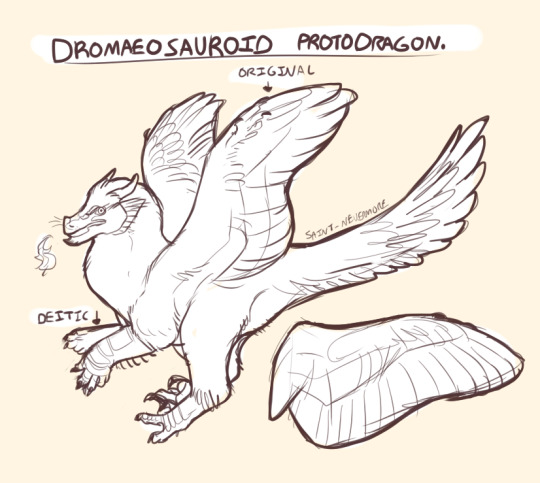
the ancestral condition in the dromaeosauroid weirdo is feathered wings, but another influenced trait is a structure which will eventually become the pseudo-pinnae. this is a ring of cartilage behind the ear anchoring long feathers which can be moved, and this is a sexual display structure, so over time larger and more impressive ear fans were selected for, eventually resulting in that cartilage becoming longer and sturdier to further exaggerate those ear feathers. this large cartilage structure also lends itself to catching sound better... which is the purpose in most modern dragons, the feathers (or quills, which are directly derived from feathers) being vestigial. Now We Got Ears. I think there's a possibility the same push for Support For Display Feathers could have affected the wings as well, causing the fingers to elongate and have more skin between them for support of feathers. I'm just sayin sexual selection can push for some WEIRD features
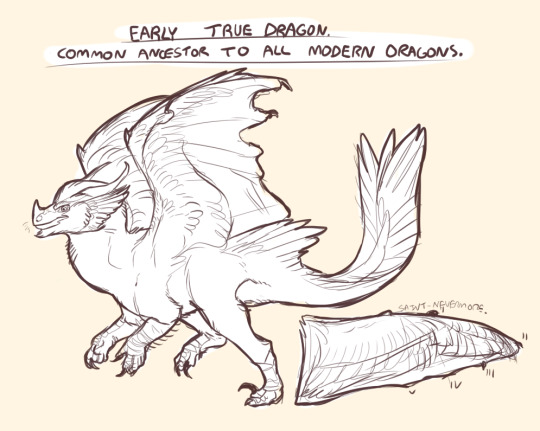
so then the earliest dragons have a half-and-half wing structure, still probably kinda bad for flying, but invaluable in slowing descents and balance. it wouldn't be long before a later early dragon develops glide-assistance and powered flight, and then from there feathered wings re-evolved a handful of times due to different evolutionary pressures. it should be noted only Avians and Amphithere dragons so far have fully feathered bird-like wings, the rest have membranous wings.
if I were to go for something a bit more realistic and not as out-there, I think I'dve opted for dragons to be all wyvern-shaped with feathered wings. the deity influence thing lets me keep it jovial designing these guys, the speculative evolution is outlandish and kind of hard to explain because I think it's funner that way (and by god does Nature do weird shit all the time too)! the closest to this would be scansoriopterygid dinosaurs, which are funny little guys who despite having direct evidence for feathers, had membranous wings for some reason. I figured if they could do it, so could my boys. it should be noted these had three digits and then a specialised wrist bone, whereas dragons again have the 5 digits, which might have lended themselves a bit better to evolving with membranes?
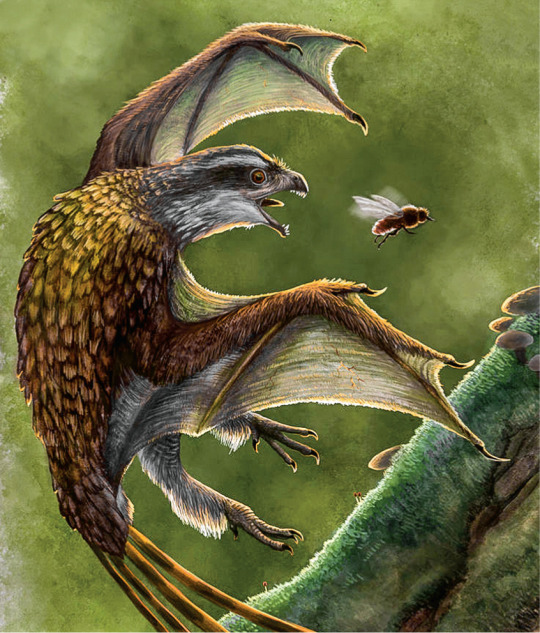
Yi Qi by Emily Willoughby (one of my favourite palaeoartists)
#raven.txt#asks#nevverse#lore post#anonymous#dragons#dragon#smaugust#It Counts I think#fraizer draws#long post
31 notes
·
View notes